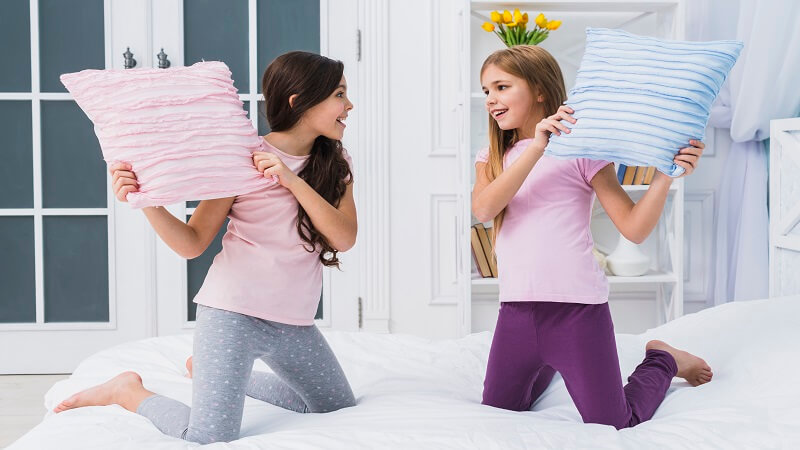Choosing the right children’s bunk bed is an important decision that requires careful consideration. Bunk beds offer a fun and space-saving solution for shared bedrooms, but they also come with unique safety concerns and practical considerations.
Before purchasing a bunk bed, it’s crucial to assess your children’s ages, room size, and safety requirements to ensure you select the best option for your family. Factors like mattress size, bed frame material, and additional features such as storage drawers or desks can greatly impact your children’s comfort and the overall functionality of their sleeping space.
When shopping for a bunk bed, take into account your children’s interests and preferences. Some kids may be thrilled by the idea of climbing up to a top bunk, while others might prefer sleeping closer to the ground. Consider options like loft beds or triple bunk beds to accommodate different needs and maximize floor space in smaller rooms.
Key Takeaways
- Assess safety features, room size, and children’s ages before purchasing
- Consider mattress size and bed frame material for comfort and durability
- Choose a style that suits your children’s preferences and room layout
Essential Safety Considerations
Safety is paramount when selecting a bunk bed for children. Proper construction, stability, and safety features can prevent accidents and injuries.
Assessing Bunk Bed Stability and Construction
A sturdy bunk bed is crucial for child safety. Look for models made from solid hardwood or metal, as these materials offer superior strength and durability. The frame should be free from wobbles or creaks when shaken. Check that all joints are securely fastened and reinforced.
Ensure the bunk bed can support the weight of your children. Most manufacturers specify weight limits for each bunk. Adhere to these guidelines strictly.
Consider the ceiling height in your child’s room. There should be at least 60 cm of space between the top bunk and the ceiling to prevent head injuries.
Choosing the Right Safety Features
Guardrails are essential safety components. They should be present on all sides of the top bunk, with no gaps larger than 8.9 cm. The rails must extend at least 12.7 cm above the mattress surface to prevent falls.
Look for bunk beds with sturdy ladders or steps. These should be securely attached to the frame and have non-slip treads. Some models feature built-in handles for added stability when climbing.
Choose a bunk bed with rounded edges and corners to reduce the risk of bumps and bruises. Avoid models with decorative elements that could pose entanglement hazards.
Ensure the mattress fits snugly within the bed frame. There should be no more than 3.8 cm of space between the mattress and the bed frame to prevent entrapment.
Selecting the Perfect Bunk Bed
Choosing the right bunk bed involves considering various factors to ensure safety, functionality, and style. A well-selected bunk bed can maximize space, provide storage solutions, and create an exciting sleeping environment for children.
Understanding Different Bunk Bed Types and Designs
Standard bunk beds feature two twin beds stacked vertically, but many variations exist. Twin over full bunk beds offer more space on the bottom bunk, ideal for older children or adults. Triple bunk beds accommodate three sleepers, perfect for larger families or frequent sleepovers.
Loft beds elevate the sleeping area, creating usable space underneath for desks, dressers, or play areas. Corner bunk beds fit snugly into room corners, optimizing floor space. Some designs incorporate a trundle bed for additional sleeping capacity.
Bunk beds with stairs provide safer access to the top bunk compared to ladders, especially for younger children. These often include built-in storage drawers in the stair risers.
Maximizing Space with Storage and Bed Sizes
Bunk beds are excellent space-savers, particularly in smaller bedrooms. Many models feature built-in storage options like drawers under the bottom bunk or shelving units at the end of the bed frame.
Consider mattress sizes carefully. Twin-size mattresses are standard, but full-size options offer more sleeping space. Ensure the room’s dimensions can accommodate the bunk bed’s footprint and allow for safe access.
Storage options vary widely. Some bunk beds include under-bed drawers, while others have integrated desks or wardrobes. Assess your storage needs and choose a design that helps declutter the room.
Aesthetic Considerations and Material Choices
Bunk beds come in various materials and finishes to suit different decor styles. Wood bunk beds offer a classic, durable option and can be painted or stained to match room aesthetics. Metal frames provide a sleek, modern look and are often more affordable.
Consider the overall room design when selecting a bunk bed. Some models feature playful elements like slides or tents, ideal for younger children. For older kids or guest rooms, more sophisticated designs might be appropriate.
Colour choices can impact the room’s atmosphere. Lighter colours can make small spaces feel larger, while darker tones create a cozy feel. Some bunk beds allow for customization through interchangeable panels or fabric accents.
Conclusion
Choosing a bunk bed for children requires careful consideration of several key factors. Safety should be the top priority, with sturdy construction and proper guardrails essential. Space constraints, room layout, and the ages of the children using the beds are also crucial elements to evaluate.
Versatility and storage options can add significant value to a bunk bed purchase. By weighing these important aspects, parents can make an informed decision that best suits their family’s needs and ensures a comfortable sleeping arrangement for their children.
